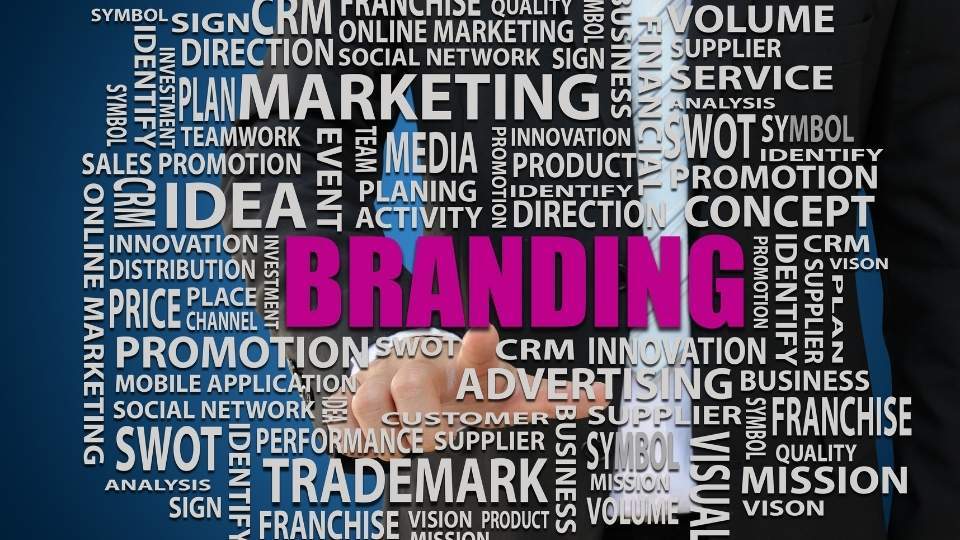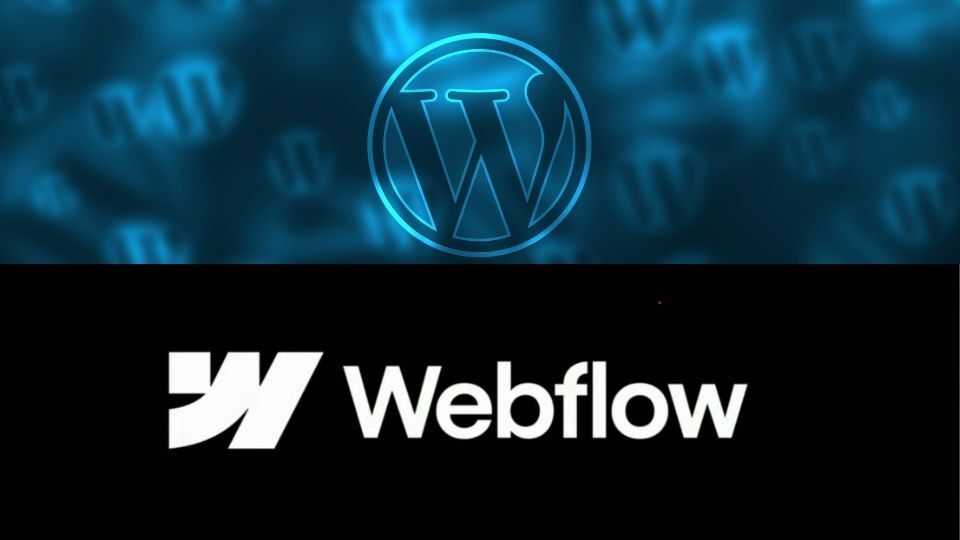The world of website design and content management systems (CMS) is evolving fast. What worked well a few years ago might now be holding your brand back. As of 2025, the WordPress vs Webflow debate has grown louder, and for good reason. Businesses are no longer asking if they should switch platforms — they’re asking when.
With WordPress powering more than 40% of the web, it’s undeniably dominant. But Webflow’s rise is not just hype. It’s grounded in a growing demand for speed, control, and performance that WordPress doesn’t always deliver natively — at least, not without a lot of plugins, developers, and patience.
If you’re a brand decision-maker, marketer, designer or founder, understanding the core differences between WordPress vs Webflow in 2025 is no longer optional — it’s essential.
Before you lock in your next CMS decision, this side-by-side analysis will help you weigh the pros and cons from every angle — performance, SEO, scalability, ease of use, integrations, and cost.
Platform Philosophy & User Experience
When comparing WordPress vs Webflow, understanding how each platform is built and who it’s built for sets the foundation. These aren’t just tools — they reflect two entirely different mindsets about how websites should be created, managed, and scaled.
WordPress: Open-Source Flexibility, Developer Dependency
WordPress is open-source and built to be extended. On the surface, that sounds ideal — limitless potential, vast community support, and near-universal compatibility. But in practice, that flexibility often leads to complexity.
- Plugins run the show: Virtually every function beyond basic blogging relies on plugins — from SEO to security to design layout.
- Developer required: Most non-technical users need to hire a developer or agency to build and maintain anything custom or secure.
- Design is layered: Themes, child themes, page builders — all add to the stack. It’s powerful, but rarely streamlined.
The result? A WordPress site can be anything you want — but it requires ongoing maintenance, development support, and a careful hand to avoid plugin conflicts or security lapses.
Webflow: All-in-One, Visual-First
Webflow takes a radically different approach. It’s a closed, proprietary platform — but one built from the ground up with modern web standards, UX, and visual development in mind.
- No plugins needed: Most key features — animations, responsive design, CMS, SEO controls — are baked in.
- Visual development: Webflow lets designers build sites like they’re working in Figma, but outputs clean, semantic HTML/CSS.
- Developer optional: Developers can still extend Webflow with custom code, but non-developers can build powerful, scalable sites alone.
This core philosophy — that design and development should be unified — has made Webflow the platform of choice for many creative-first brands, agencies, and startups.
Key Differences in UX:
| Feature | WordPress | Webflow |
| Ease of Use | Moderate to steep learning curve | Moderate learning curve, better UX |
| Customisation | High (via code or plugins) | High (via visual builder + code) |
| Maintenance | Manual updates, backups, security | Handled by Webflow |
| Visual Editing | Depends on builder (e.g., Elementor) | Native and powerful |
| Speed & Responsiveness | Depends on theme + plugins | Native, fast, and responsive |
In 2025, WordPress vs Webflow is not just a CMS comparison — it’s a question of what kind of workflow your brand wants to adopt. Do you want to manage updates and integrations across dozens of moving parts? Or do you want a tightly integrated experience where design, content, and performance are connected?
Performance, Speed & Core Web Vitals
In 2025, website performance optimisation isn’t just about fast loading — it’s a critical SEO signal, a UX requirement, and often the difference between bounce and conversion. Core Web Vitals (Largest Contentful Paint, First Input Delay, Cumulative Layout Shift) are now embedded into Google’s ranking algorithm, and users expect a page to load in under 2 seconds.
So how do WordPress and Webflow compare on speed and performance?
WordPress: Variable, Plugin-Dependent Performance
WordPress performance is entirely dependent on how you configure your stack.
- Theme quality matters: Lightweight themes like Astra or GeneratePress perform well — but not all themes are built efficiently.
- Plugins bloat fast: Even simple functionality like sliders or forms can require multiple plugins, each adding overhead.
- Hosting makes or breaks speed: Cheap shared hosting often kills performance. You’ll need a managed hosting service like Kinsta, WP Engine, or Cloudways to stay competitive.
- Optimisation is manual: You’ll need caching plugins (e.g., WP Rocket), image compressors, and performance tools to stay compliant with Core Web Vitals.
In short: A WordPress site can be fast, but only if you have the right theme, plugins, hosting, and optimisation strategy in place.
Webflow: Native Speed, Cloud Hosting by Default
Webflow takes a far more opinionated approach — and that’s a good thing for performance.
- No plugins, no bloat: Most features are built-in and optimised from the start.
- Optimised code output: The code Webflow generates is clean, semantic, and lightweight — ideal for fast rendering.
- CDN-powered hosting: Webflow’s sites are hosted on AWS and Fastly, ensuring global delivery with excellent uptime.
- Built-in asset optimisation: Images, fonts, and assets are compressed automatically, and lazy loading is native.
Because Webflow controls both the front end and the hosting environment, performance is consistent and reliable — with little input required from the user.
While WordPress offers more control, it demands more technical work to stay fast. Webflow’s performance is handled under the hood — an increasingly attractive feature for brands focused on content and marketing rather than maintenance.
Verdict on Speed
If performance is a high priority and you don’t want to babysit your stack, Webflow leads the WordPress vs Webflow race here. WordPress can catch up — but not without effort, expertise, and cost.
SEO Capabilities & Search Visibility
Search Engine Optimisation isn’t just about meta tags anymore — it’s about site architecture, load speed, structured data, accessibility, and mobile performance. For modern brands, the platform you choose can directly impact your search visibility.
Here’s how WordPress and Webflow stack up when it comes to SEO in 2025.
WordPress: SEO Power with the Right Stack
WordPress has long been praised for its SEO potential, but it rarely works well out of the box. You’ll need to assemble the right plugins and configurations to take full control.
- Plugins like Yoast or Rank Math: These offer advanced control over metadata, canonical tags, breadcrumbs, sitemaps, and more.
- Permalink structure: Fully customisable, but can get messy if not configured early.
- Schema markup: Achievable via plugins, though it often requires manual setup or developer input.
- AMP (Accelerated Mobile Pages): Still supported, but adoption is fading due to improvements in mobile performance elsewhere.
- Siloing and taxonomies: Strong support for complex content structures through categories, tags, and custom post types.
But there’s a trade-off: SEO plugins often add extra scripts, increase page size, and require updates to avoid conflicts — all of which can negatively affect page speed, one of Google’s key ranking factors.
Webflow: Clean Code and Built-In SEO Features
Webflow is designed to output clean, semantic HTML5 — which Google’s crawler loves. Most SEO features are built-in and handled through the visual interface.
- Custom meta tags and Open Graph settings: Editable for every page, CMS entry, and collection item.
- Automatic sitemap generation: No plugin needed.
- SSL and HTTPS: Enabled by default.
- Fast page speeds: Boost SEO naturally due to better Core Web Vitals.
- Semantic HTML: Designers can define headings, sections, navs, and articles with real HTML5 tags — not just “styled divs.”
- 301 redirects and canonical tags: Manageable via the dashboard.
Webflow doesn’t have plugins like Yoast, but that’s the point — you don’t need them. Most SEO-critical features are available by default and don’t rely on third-party tools.
Structured Data & Schema
This is where WordPress has more edge — if you have a developer or plugin setup for rich snippets, reviews, event data, etc.
Webflow allows for custom schema via embed code, but it’s manual. Brands focused on content-driven SEO may find WordPress easier to automate at scale in this area — but it comes at the cost of speed and simplicity.
Verdict on SEO
In the WordPress vs Webflow SEO battle:
- WordPress wins on advanced control and structured data at scale.
- Webflow wins on code quality, speed, and ease-of-use — and will cover 80%+ of SEO needs for most modern brands without extra tools.
If SEO is mission-critical and you have dev resources, WordPress is still a contender. But if you’re looking for clean execution, fewer moving parts, and fast-loading pages, Webflow delivers SEO strength by design.
Content Management & Team Workflows
A CMS should make publishing easier, not harder. Whether you’re managing a blog, updating landing pages, or coordinating with multiple contributors, the efficiency of your platform directly affects your ability to execute campaigns and maintain momentum.
So how do WordPress and Webflow compare when it comes to managing content and workflows?
WordPress: Mature CMS, but Complex for Teams
WordPress began as a blogging platform, and it still excels at content-heavy sites — but managing content at scale in 2025 requires a lot more than a text editor.
- Classic Editor vs Gutenberg: Gutenberg (block editor) is now the default, offering more layout flexibility, but many teams still revert to Classic Editor or use third-party builders like Elementor, which fragments the experience.
- Roles and permissions: WordPress offers detailed user roles (Admin, Editor, Author, Contributor, Subscriber), but customisation often requires plugins.
- Media management: The media library is functional but basic. It lacks folder organisation and powerful search, which can slow down teams.
- Collaboration tools: Native tools are minimal. Real-time editing or commenting requires plugins or third-party platforms like Google Docs or Notion.
- Multisite functionality: Great for managing multiple sites, but complex to set up and maintain.
For larger content teams, WordPress works — but only with the right plugins, workflow integrations, and training. It can be powerful, but it’s not intuitive out of the box.
Webflow: Streamlined, Visual, and Built for Marketers
Webflow’s CMS isn’t trying to mimic traditional publishing tools — it’s built for modern content teams who need flexibility without code.
- CMS Collections: Custom content types (e.g., blog posts, case studies, team profiles) are easy to create, visually mapped, and repeatable.
- Inline editing: Content editors can log in, click directly on a webpage, and update copy, images, or links without entering a dashboard or back end.
- Collaborator roles: Editors can publish without risking design changes; designers control the layout.
- No plugins required: Forms, SEO fields, dynamic content, and visual changes happen in one space — with zero plugin conflict risk.
- Webflow Logic (2025 update): Native workflow automation allows content-triggered actions (e.g., form submissions triggering emails or page updates), reducing reliance on tools like Zapier.
- AI-assisted content tools: Newer Webflow integrations offer smart suggestions, content generation, and image management features — native, not bolted on.
Webflow is more opinionated — but that’s what makes it easy to use. Marketing teams don’t need to learn HTML, wrestle with plugin dashboards, or rely on developers for minor changes.
Real-World Use Case:
A mid-size SaaS company with weekly blog content, multiple landing pages, and a product marketing team of 5+ will typically see:
- Faster time-to-publish in Webflow (1–2 hrs vs. 4–6 hrs in WordPress)
- Fewer bugs and versioning issues, thanks to a unified visual environment
- Lower developer reliance, freeing engineering teams for core product work
Verdict on Content Workflows
In 2025, Webflow clearly wins for ease of use, speed, and autonomy — especially for design-led teams and non-technical marketers. WordPress still scales for content-heavy enterprises, but only if you can invest in the plugins, structure, and technical support needed to keep it running smoothly.
Design Flexibility & Branding Control

Modern brands need more than templates. They need precision, consistency, and the ability to ship visually stunning pages fast — without breaking the system every time a layout changes.
Design flexibility is where Webflow has gained serious traction over the past few years. Here’s why.
WordPress: Dependent on Themes and Page Builders
WordPress isn’t a design tool on its own — it’s a framework that requires a theme or builder to do anything visual.
- Themes limit flexibility: Most themes have pre-set layouts and styles. Customising them often requires diving into CSS, PHP, or hiring a developer.
- Page builders vary wildly: Elementor, WPBakery, Beaver Builder, and others offer drag-and-drop design — but each has its own quirks, performance trade-offs, and learning curves.
- Global design consistency is hard: Styles are often managed across plugins, custom CSS, and theme options, leading to versioning problems and inconsistent branding.
- Mobile responsiveness is manual: Good themes handle this, but it’s not guaranteed. More complex layouts often need developer tweaks to render cleanly on all screens.
Webflow: Pixel-Perfect, Code-Free Design
Webflow was built by designers, for designers. It’s not a theme-based system — it’s a visual front-end that generates production-ready code.
- 100% custom layout control: Flexbox, grid, spacing, breakpoints — all visually editable and rendered in real-time.
- Global style management: Colours, typography, buttons, containers — everything can be defined globally, changed in one place, and reflected across the site.
- Responsive design is native: Custom breakpoints and preview tools let you build for desktop, tablet, and multiple mobile sizes with full control.
- Interactions & animations: Parallax effects, hover states, scroll-triggered animations — all available visually, with no JavaScript needed.
- Brand-safe workflows: Designers can lock layout components while still allowing marketers to edit content, keeping visuals consistent.
Webflow essentially replaces the need for front-end developers in many branding scenarios. The design system is structured, scalable, and precise — crucial for startups, agencies, and any company that needs to move quickly without sacrificing design quality.
Design Iteration Speed
| Action | WordPress (Elementor) | Webflow |
| Launch new landing page | 2–5 hours (with QA) | 1–2 hours |
| Update brand colours site-wide | 30–90 mins (varies) | <15 mins |
| Implement complex animation | Custom JS or plugin | Built-in |
| Match Figma mockup pixel-perfect | Requires dev | Direct visual build |
Verdict on Design
Webflow dominates in 2025 for visual control, branding precision, and speed. WordPress can still get you there, but it’s rarely seamless — and almost always requires extra tools or hands.
For design-driven brands that want to stand out, Webflow delivers agency-level polish in a fraction of the time.
Security, Maintenance & Technical Overhead
Choosing CMS integrations is never just about features. It’s also about what it takes to keep the platform running smoothly, safely, and without surprises. For modern brands, reducing maintenance complexity can free up internal resources and lower risk.
WordPress: High Responsibility, High Risk
Because WordPress is open-source and self-managed (unless using a premium host), it comes with significant technical responsibility.
- Frequent updates: The core CMS, theme, and every plugin all update on different cycles. Miss one, and you risk breakage or vulnerabilities.
- Security patches: WordPress is a major target for attacks. Common exploits include outdated plugins, insecure themes, and poor permissions.
- Backups and restores: You need your own solution — either via plugins (UpdraftPlus, Jetpack) or your hosting provider.
- Hosting varies wildly: From $5/month shared hosting to $100+/month managed options. The cheaper the host, the more risk and slower the site.
- DevOps required: Many WordPress sites require ongoing developer or sysadmin oversight to keep things stable.
WordPress puts you in control, but that control comes at a cost — time, skill, and vigilance. For lean teams or non-technical marketers, this often becomes a burden.
Webflow: Secure by Design, Maintenance-Free
Webflow removes almost all of the technical overhead from the equation by design. It’s a closed platform — but in exchange, it handles the heavy lifting for you.
- Hosting included: Every Webflow site runs on a global CDN powered by AWS and Fastly, with SSL enabled by default.
- No plugin risks: Fewer moving parts means fewer vulnerabilities. No plugins to update, no theme conflicts, no dependency issues.
- Automatic backups: Version history and restore points are built into the platform — instant rollback if needed.
- Infrastructure security: Webflow is SOC 2 Type II compliant, with enterprise-grade encryption and active monitoring.
- 99.99% uptime SLA: Mission-critical sites (e.g., fintech, SaaS) benefit from consistent uptime and scalable performance without intervention.
This makes Webflow particularly attractive for agencies, startups, and mid-sized brands that want to scale without spinning up a DevOps team or worrying about weekend emergencies.
While WordPress offers more flexibility, Webflow offers peace of mind. For many brands in 2025, that trade-off is worth it — especially as teams prioritise agility, not sysadmin complexity.
Verdict on Maintenance & Security
In this round of WordPress vs Webflow, Webflow is the clear winner. WordPress can be hardened and optimised — but only with investment and ongoing oversight. Webflow offers enterprise-level infrastructure, even for small teams, without the maintenance tax.
Frequently Asked Questions
1. Which is better in 2025: WordPress or Webflow?
The answer depends on your priorities. If you want complete control, access to an open-source ecosystem, and you’re comfortable managing plugins and hosting, WordPress remains a strong choice. However, if you value design freedom, built-in performance, and reduced maintenance, Webflow is increasingly the better platform in 2025.
The WordPress vs Webflow comparison today leans toward Webflow for modern brands that want speed, control, and fewer moving parts.
2. Is Webflow better for SEO than WordPress?
Webflow offers built-in SEO features that match or exceed what WordPress provides via plugins. It outputs clean code, supports structured content, and prioritises Core Web Vitals — all of which matter for SEO. However, WordPress has an edge in advanced SEO scenarios if configured correctly with tools like Rank Math or Yoast.
In WordPress vs Webflow for SEO, Webflow wins for simplicity and page speed, while WordPress may edge out on deep customisation — with more effort.
3. Can I migrate from WordPress to Webflow easily in 2025?
Migration from WordPress to Webflow is possible, but not fully automatic. Content (text, images, blog posts) can be exported and imported using CSV and Webflow CMS collections. However, design and layout elements need to be rebuilt in Webflow manually.
When evaluating WordPress vs Webflow, understand that a switch is a project — not a one-click import. But for many brands, the performance and UX payoff makes the transition worthwhile.
4. What are the biggest advantages of Webflow over WordPress?
In 2025, Webflow offers several clear advantages:
- Visual, code-free design interface
- Built-in CMS and SEO tools
- Fast, CDN-backed hosting included
- Zero plugin conflicts
- Native animations and responsiveness
- Easy content editing for marketers
In short, Webflow simplifies what WordPress complicates, making it ideal for growing brands with limited dev resources.
5. Is WordPress still relevant in 2025?
Yes, WordPress is still widely used and relevant — particularly for content-heavy sites, large media outlets, and enterprise-level businesses that need deep customisation. It powers a huge percentage of the web and offers flexibility no other CMS matches.
However, in the WordPress vs Webflow comparison, WordPress is losing favour among newer, fast-moving brands that prioritise visual design, speed, and operational simplicity.
6. Which is more cost-effective: WordPress or Webflow?
Upfront, WordPress appears cheaper — especially if you’re using free themes and plugins. But long-term costs often add up: premium themes, managed hosting, plugin licences, developer retainers, and ongoing maintenance.
Webflow, while charging more monthly, includes hosting, backups, updates, and security. For many, Webflow turns out to be more predictable and cost-efficient in the long run — especially when factoring in fewer hours spent on upkeep.
So in terms of WordPress vs Webflow cost over 12–24 months, Webflow often wins on total cost of ownership for lean teams.
7. Can Webflow handle e-commerce like WordPress (WooCommerce)?
Webflow has e-commerce functionality, but it’s more limited than WooCommerce. It’s excellent for simple to mid-sized shops and offers a visually integrated experience. However, if you’re running a large online store with advanced custom logic, WooCommerce may still be more powerful — though also more complex.
In WordPress vs Webflow for e-commerce, Webflow works best for curated, design-focused shops. WooCommerce wins for large catalogues or highly custom requirements.
8. Do developers prefer WordPress or Webflow?
It depends on the developer. Traditional backend developers often prefer WordPress due to its extensibility and access to raw PHP. However, front-end developers and designers increasingly favour Webflow for its speed, clean code, and ability to hand off editable sites to clients without ongoing maintenance.
In the current landscape of WordPress vs Webflow, developer preference is split — but Webflow is winning hearts in the no-code and low-code sectors.
Regardless of platform, scalability and performance remain critical. Developers aiming for long-term growth must consider how their chosen CMS handles traffic spikes, content expansion, and third-party integrations. A well-architected site ensures faster load times, better SEO, and smoother user experiences — all of which contribute to business success.
Building Scalable Website Architecture for Growth and Performance
9. Which platform is better for design agencies in 2025?
For design-led agencies delivering high-quality websites quickly, Webflow is hard to beat. It allows faster prototyping, full visual control, and client-ready CMS functionality without the need to manage third-party plugins or hosting.
WordPress is still viable for larger, complex client builds — but for branding projects, landing pages, and marketing websites, Webflow is becoming the default choice.
So in the WordPress vs Webflow debate for agencies, Webflow is the modern solution for faster delivery and easier client handoff.
10. What’s the future of WordPress vs Webflow?
The trend line in 2025 is clear: Webflow is growing fast, especially with startups, SaaS companies, design studios, and content marketers. WordPress continues to serve large-scale applications, legacy systems, and developers who need deep customisation.
Looking forward, WordPress vs Webflow is less about one killing the other — and more about choosing the right tool for the job. But the pressure is on: Webflow is catching up in functionality while surpassing WordPress in UX, design control, and speed.
Ready to Rebuild Without Regret?
At Smart Digitants, we help forward-thinking brands transition from bloated WordPress stacks to streamlined, high-performance Webflow experiences.
Whether you’re planning a full redesign, considering a hybrid build, or just need expert advice on choosing between WordPress vs Webflow, we’ll help you make the right move — and execute it flawlessly.
Our Content Writing Team at Smart Digitants is a group of dedicated professionals, passionate about creating high-quality, engaging content.
- Platform Philosophy & User Experience
- Performance, Speed & Core Web Vitals
- SEO Capabilities & Search Visibility
- Content Management & Team Workflows
- Design Flexibility & Branding Control
- Security, Maintenance & Technical Overhead
- Frequently Asked Questions
- 1. Which is better in 2025: WordPress or Webflow?
- 2. Is Webflow better for SEO than WordPress?
- 3. Can I migrate from WordPress to Webflow easily in 2025?
- 4. What are the biggest advantages of Webflow over WordPress?
- 5. Is WordPress still relevant in 2025?
- 6. Which is more cost-effective: WordPress or Webflow?
- 7. Can Webflow handle e-commerce like WordPress (WooCommerce)?
- 8. Do developers prefer WordPress or Webflow?
- 9. Which platform is better for design agencies in 2025?
- 10. What’s the future of WordPress vs Webflow?
- Ready to Rebuild Without Regret?










